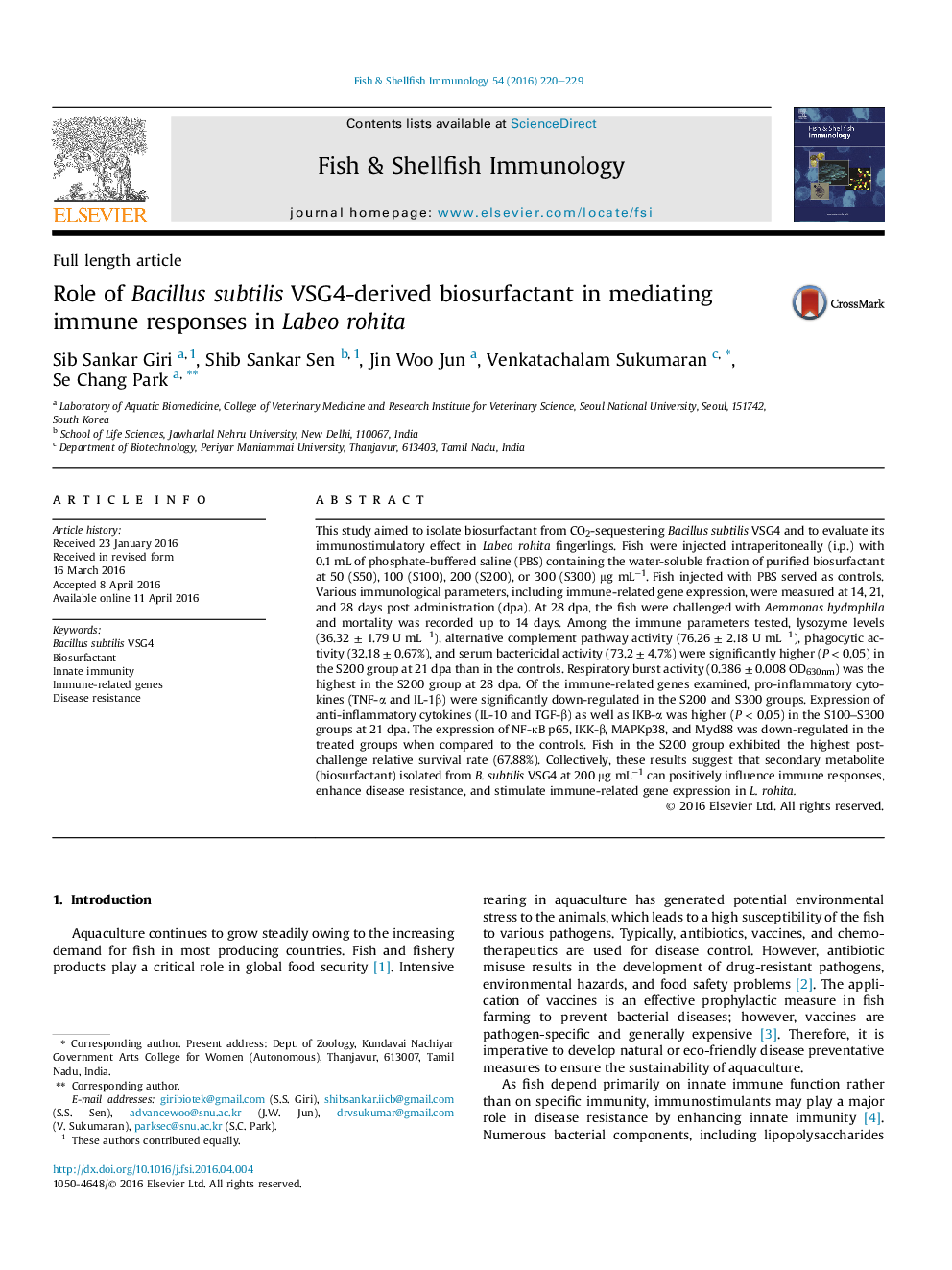| Article ID | Journal | Published Year | Pages | File Type |
|---|---|---|---|---|
| 2430615 | Fish & Shellfish Immunology | 2016 | 10 Pages |
Abstract
This study aimed to isolate biosurfactant from CO2-sequestering Bacillus subtilis VSG4 and to evaluate its immunostimulatory effect in Labeo rohita fingerlings. Fish were injected intraperitoneally (i.p.) with 0.1 mL of phosphate-buffered saline (PBS) containing the water-soluble fraction of purified biosurfactant at 50 (S50), 100 (S100), 200 (S200), or 300 (S300) μg mLâ1. Fish injected with PBS served as controls. Various immunological parameters, including immune-related gene expression, were measured at 14, 21, and 28 days post administration (dpa). At 28 dpa, the fish were challenged with Aeromonas hydrophila and mortality was recorded up to 14 days. Among the immune parameters tested, lysozyme levels (36.32 ± 1.79 U mLâ1), alternative complement pathway activity (76.26 ± 2.18 U mLâ1), phagocytic activity (32.18 ± 0.67%), and serum bactericidal activity (73.2 ± 4.7%) were significantly higher (P < 0.05) in the S200 group at 21 dpa than in the controls. Respiratory burst activity (0.386 ± 0.008 OD630nm) was the highest in the S200 group at 28 dpa. Of the immune-related genes examined, pro-inflammatory cytokines (TNF-α and IL-1β) were significantly down-regulated in the S200 and S300 groups. Expression of anti-inflammatory cytokines (IL-10 and TGF-β) as well as IKB-α was higher (P < 0.05) in the S100âS300 groups at 21 dpa. The expression of NF-κB p65, IKK-β, MAPKp38, and Myd88 was down-regulated in the treated groups when compared to the controls. Fish in the S200 group exhibited the highest post-challenge relative survival rate (67.88%). Collectively, these results suggest that secondary metabolite (biosurfactant) isolated from B. subtilis VSG4 at 200 μg mLâ1 can positively influence immune responses, enhance disease resistance, and stimulate immune-related gene expression in L. rohita.
Related Topics
Life Sciences
Agricultural and Biological Sciences
Aquatic Science
Authors
Sib Sankar Giri, Shib Sankar Sen, Jin Woo Jun, Venkatachalam Sukumaran, Se Chang Park,
